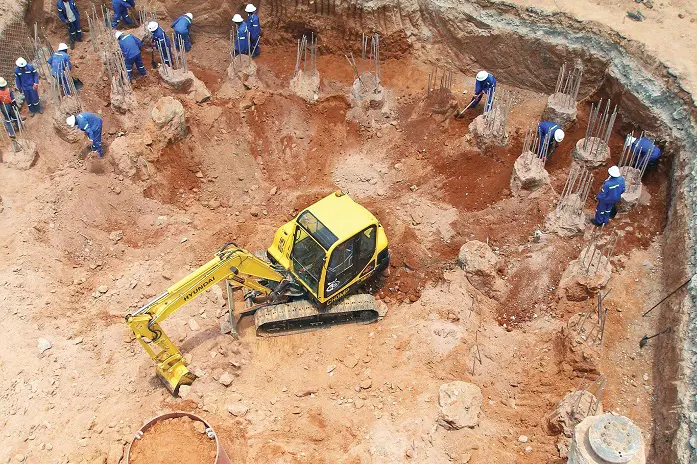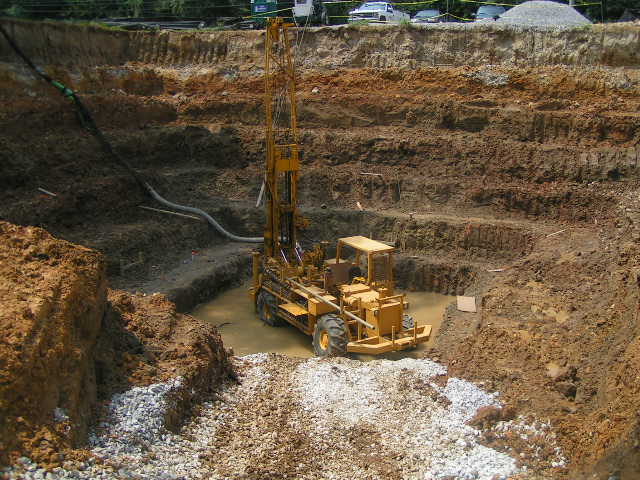A Thorough Overview of Geotechnical Engineering Techniques and Their Influence on Modern Civil Engineering Projects
Geotechnical engineering works as the backbone of modern-day civil engineering, giving essential techniques that resolve the intricacies of subsurface problems. The interaction of soil evaluation, structure design, and cutting-edge innovations shapes the stability and sustainability of infrastructure jobs. As we discover these methods, it comes to be clear just how vital they are in mitigating prospective threats associated with building and construction. The implications of these strategies expand past simple safety and security; they additionally influence job effectiveness and environmental considerations, increasing important concerns regarding future improvements in the field. What remains to be uncovered is the transformative possibility of these advancements on urban development.
Relevance of Geotechnical Engineering
Geotechnical design functions as a critical structure for civil engineering projects, affecting the security and security of frameworks. This self-control concentrates on the behavior of soil and rock products, providing important understandings that direct the layout and construction procedures. By recognizing the communication between the earth and crafted structures, geotechnical engineers can examine risks related to ground conditions, such as negotiation, slope stability, and liquefaction.
The importance of geotechnical design expands beyond simple structural honesty; it plays a vital role in environmental management and sustainability. Properly carried out geotechnical assessments make certain that projects reduce their ecological footprint and adhere to regulative requirements (geotechnical specialist). Geotechnical design is important in site selection, enabling designers to determine ideal areas for building and construction that alleviate possible threats.
In enhancement, geotechnical design cultivates innovation in civil design by progressing methods for ground enhancement, structure design, and excavation. The technique's payments are crucial in resolving challenges postured by varying dirt conditions, therefore promoting reliable and risk-free infrastructure growth. Overall, the significance of geotechnical engineering is critical in ensuring that civil engineering projects are not only possible but likewise resistant versus all-natural and man-made hardships.
Key Techniques in Geotechnical Engineering

An additional necessary method is soil stabilization, which entails customizing soil properties to improve load-bearing capacity or decrease negotiation. Techniques such as including concrete, lime, or making use of geosynthetics are generally utilized to accomplish soil enhancement.
Ground improvement techniques, consisting of vibrant compaction and vibro-replacement, are additionally vital. These techniques intend to densify loosened or soft soils, enhancing their strength and reducing liquefaction potential in seismic areas.
Keeping frameworks, such as sheet heaps and dirt nailing, are employed to sustain excavations and protect against dirt motion. Moreover, slope stablizing methods, including drainage systems and retaining wall surfaces, are vital for reducing landslide risks.

Dirt Analysis and Checking Methods
Effective soil analysis and screening techniques are crucial for understanding the chemical and physical residential properties of soil, which straight affect design choices. A detailed analysis of dirt qualities is vital for anticipating actions under various loading conditions and ecological impacts.
Typical dirt testing approaches include both area and lab strategies. Area examinations, such as the Standard Penetration Test (SPT) and Cone Infiltration Examination (CPT), offer immediate understandings right into dirt strength, stratification, and thickness. These examinations help designers assess website conditions effectively prior to even more comprehensive research laboratory evaluations.
Lab screening techniques, such as Atterberg restrictions, grain dimension distribution, and compaction examinations, are essential for identifying dirt plasticity, dampness content, and ideal compaction degrees. Advanced techniques like triaxial examinations and combined undrained (CU) examinations use beneficial data on shear toughness and reliable stress parameters.
Chemical testing, including pH, electrical conductivity, and natural content analysis, is also crucial for understanding prospective soil contamination and its effect on building materials. Jointly, these dirt analysis and screening techniques form the structure of notified decision-making in geotechnical design, making certain the safety and security of contemporary civil design jobs.
Foundation Layout Approaches
These methods can be classified right into superficial and deep foundations, each fit to particular soil conditions and packing scenarios. Superficial structures, such as spread grounds and floor covering foundations, are usually utilized when surface area soils have sufficient bearing ability.
On the other hand, deep structures, consisting of heaps and drilled shafts, are utilized when surface area soils are weak or inadequate for sustaining the structure. These foundations transfer lots to much deeper, much more steady dirt or rock layers, making them vital for skyscraper buildings and bridges in difficult geotechnical conditions.
Choosing the appropriate foundation layout includes extensive geotechnical examinations, consisting of soil make-up, bearing ability, and groundwater problems. Furthermore, engineers should think about aspects such as settlement, lateral lots, and possible seismic activity to make certain the foundation's efficiency over time.
Inevitably, a well-executed foundation design is a pivotal aspect of civil engineering, straight affecting the safety, resilience, and functionality of frameworks. all about geotechnical engineering. By straightening foundation types with site-specific problems, engineers can effectively minimize dangers associated with foundation failure
Developments Forming Civil Engineering

Lasting materials, such as high-performance concrete and recycled aggregates, are also obtaining grip, promoting eco-friendly methods while preserving structural integrity. Furthermore, advanced geotechnical strategies, such as ground renovation and deep mixing techniques, her latest blog are boosting the stability of foundations in tough dirt conditions.
Moreover, the use of drones and remote noticing modern technology is boosting website evaluating and keeping track of, offering real-time information that aids in managing building progression and security. The implementation of cutting-edge construction methods, such as premade and modular construction, better expedites project timelines and decreases waste. Jointly, these developments are not only transforming civil design techniques but additionally ensuring that modern facilities meets the needs of a growing global population while attending to environmental worries.
Conclusion
To conclude, geotechnical design strategies are essential to the success of modern civil design tasks. The application of website examination, dirt stablizing, and ground enhancement techniques makes certain the safety and stability of infrastructure. Advancements such as Structure Details Modeling (BIM) and progressed monitoring modern technologies better boost project effectiveness and precision. By using these techniques, engineers can minimize dangers and add to the development of resilient metropolitan atmospheres, inevitably cultivating lasting growth and safety in civil design techniques.
Geotechnical engineering serves as the backbone of contemporary civil design, offering necessary strategies that attend to the complexities of subsurface conditions.Geotechnical engineering serves as a critical foundation for civil engineering projects, influencing the security and stability of structures.In addition, geotechnical design cultivates advancement in civil engineering by progressing methods for ground enhancement, structure style, and excavation. In general, the significance of geotechnical engineering is paramount great post to read in making sure that civil design jobs are not just practical however additionally resistant versus manufactured and all-natural difficulties.
In verdict, geotechnical design strategies are indispensable to the success of modern civil design tasks.
Comments on “How a Geotechnical Specialist Can Ensure the Success of Your Structure Foundations”